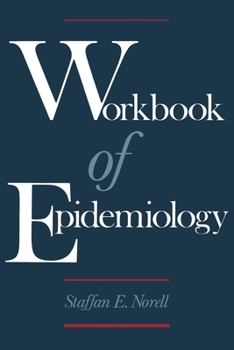Workbook of Epidemiology
Through a combination of descriptive text and exercises, this book presents an accessible framework for the planning and critical evaluation of epidemiologic studies. It describes the principal sources of error, their impact on the results, and the research strategies used to prevent errors. These strategies are the building blocks of epidemiologic study design which generally seek to obtain accurate results despite the employment of limited resources. The volume is illustrated with examples and exercises from studies published in international journals. It starts with an introduction of basic concepts, followed by a discussion of the basics of selecting the study population and follow-up period, asking the right questions, obtaining information on exposures, and analyzing disease occurrence. Separate treatment is given to strategies specific to case-control or experimental studies. Each step in the planning or critical evaluation of a study is illustrated by exercises covering a wide range of exposures--dietary factors, tobacco, alcohol, drugs, radiation and occupational hazards among others--and diseases such as cancer, cardiovascular disease, diabetes, and psychiatric disorders. The book concludes with an overall review of the different aspects of study design and a set of answers to the exercises. The text will equip students with a clear and thorough understanding of the design and accuracy of epidemiologic studies.
Format:Paperback
Language:English
ISBN:0195074912
ISBN13:9780195074918
Release Date:April 1995
Publisher:Oxford University Press
Length:328 Pages
Weight:1.05 lbs.
Dimensions:0.6" x 6.0" x 9.2"
Customer Reviews
1 rating
Epidemiology in easy step
Published by Thriftbooks.com User , 23 years ago
Audience: This book is suitable for discussion of epidemiological principles or critical evaluation for students and participants at any level of epidemiology expertise, whether beginning or advanced, as led by an experienced instructor. The result will be a development of epidemiological judgment and intuition, rather than of achieving skill in completing more technical problems. Features: The book has been produced in an attractive, easy-to-use format. The problems are based on published research, and the references are included with the answers, providing further opportunities for teaching. This is a very useful book, and I am looking forward to using it for teaching and discussion groups. The first chapter israther overambitious in attempting to present too detailed a description of epidemiological methodology in 40 pages. In places, a better use of the English idiom would have made this chapter easier to read. However, this does not detract from the main aim of this book, which is that of providing problems for discussion. I recommend the book highly for this purpose. The bulk of this book consists of seven chapters with epidemiological problems for discussion in a group setting. Six of these chapters start with a short introduction to epidemiological methodology followed by 30 short problems and 10 general questions. Another chapter contains longer problems also suitable for group discussion. The first chapter of the book provides a concise, quite detailed summary of epidemiological methods, and the last chapter has more than 100 pages of answers to all the problems listed earlier. The author found that there was a gap between epidemiological principles presented in textbooks and their application in the planning and critical evaluation of epidemiological studies. In this book, the author successfully provides the means to bridge this gap through class discussions.






